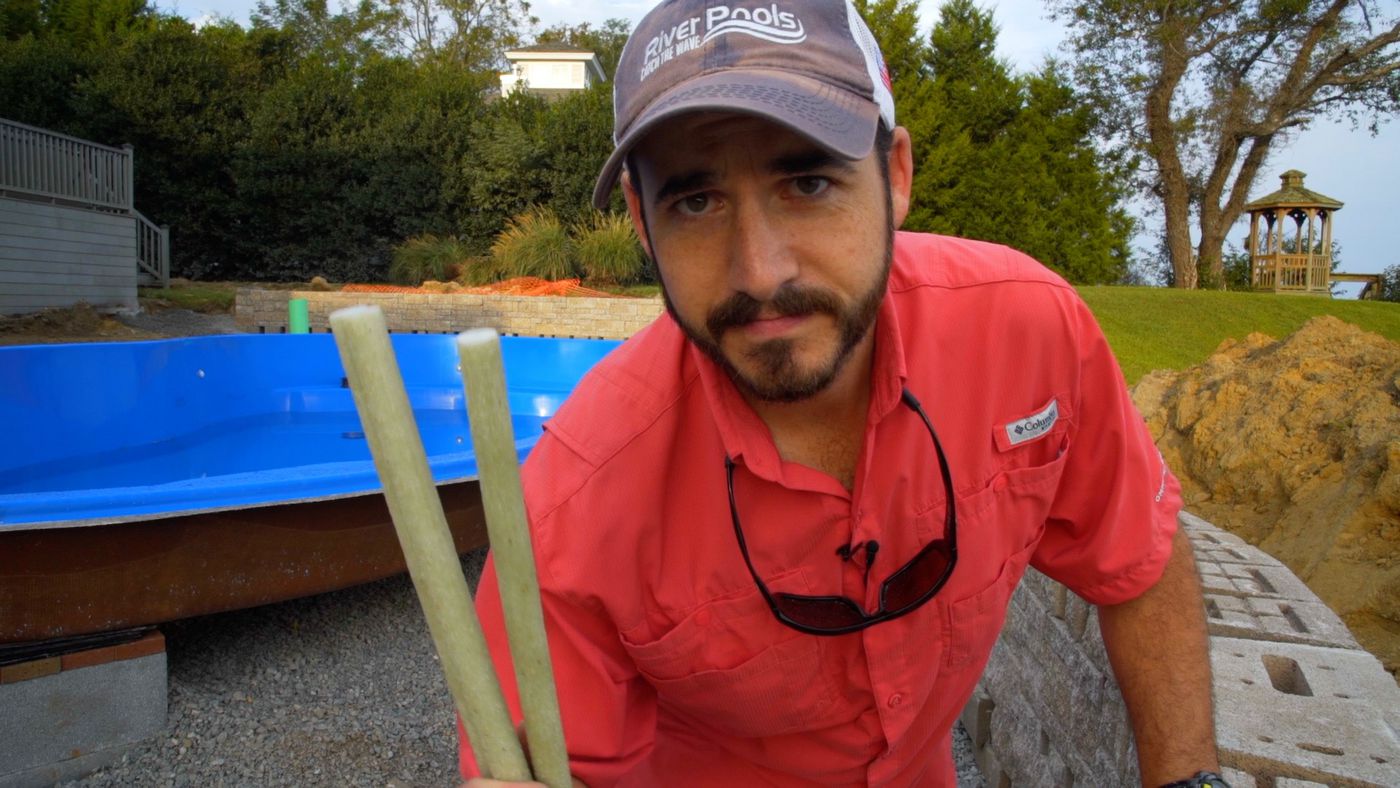Advanced Fiberglass Pool Installation - These are the same methods being taught to industry professionals through the Pool & Hot Tub Alliance's Genesis Fiberglass Pool Installation Courses.

Crushed/Chipped Stone Backfill Material
What is backfill material?
It is simply the material that is placed under the pool and around the outside of the pool shell after it is set in the excavated hole.
Installers tell us the use of clean, crushed stone backfill is imperative to the long-term success of a fiberglass pool installation.
Sand has been a traditional material used in the industry, and it may work well in areas with pure sandy soils. But it doesn’t take a soil specialist to understand what happens to sand when it becomes saturated with water: it liquifies and it shifts. To us, that doesn’t sound like a stable foundation for any inground pool.
All Schedule 40 PVC Hard Pipe
When installing a pool, there are basically two types of plumbing pipe installers choose from: hard pipe or flexible pipe.
The advanced installation methods we see today only use hard pvc pipe. Because it does not flex and bend with the contours of the pool, hard PVC pipe requires more effort to install.
It's also worth noting that flexible pipe is actually not rated for underground use. Because of this, many installers feel it's not worth the risk.
Plumbing Straps Secure Plumbing to the Pool Shell
One of the major causes of pool plumbing leaks is movement.
When pipes shift, the shift sets in motion a chain reaction that puts undue stress on the pipe, plumbing connections, and the attached components of the pool, such as return jets, skimmers, and drains.
Advanced installation methods call for securing the plumbing by fastening the pipes to the pool shell using a strap system. This helps minimize shifting and the stress placed on any component of the plumbing system.
The Rhino Rod Fuses the Fiberglass Pool Shell and Patio Together
One area of concern is where the pool shell and patio join.
A composite rod, the Rhino Rod, is used to fuse the fiberglass pool shell and patio together to help prevent shifting, settlement, or movement of the joint where your patio and pool shell come together, which could result in structural failure.
The Rhino Rod is a 12-inch-long composite rod that installers place into the top of the pool shell. It becomes encased in the concrete bond beam that is poured around the pool's perimeter.
Plumbing Encased in Stone to Minimize Plumbing Settlement
Encasing the plumbing in the right stone backfill is makes it more resistant to movement or settlement, creating a condition for long-term plumbing success.
Concrete Bond Beam Around Perimeter of Pool
All inground fiberglass pools require some concrete to be poured around their perimeter to stabilize the pool shell.
Many installers are advancing their installations by pouring this concrete bond beam so that it flows under the lip of the fiberglass pool shell and encases the Rhino Rod mentioned above.
As this concrete cures around the Rhino-Rod and the lip of the pool, it “locks” everything into place, adding structural integrity that will help keep the pool wall and patio secure for many, many years.
De-wateringPipe for Monitoring/Removing Ground Water
Eventually, all fiberglass pools will need to be drained.
You must be able to inspect and remove any groundwater around the outside of the pool shell to prevent damage that can be caused by groundwater applying excessive hydrostatic pressure which could lead to the pool popping out of the ground.
With long-term thinking in mind, many of today’s installers include a sump pipe, so you can do just that.




